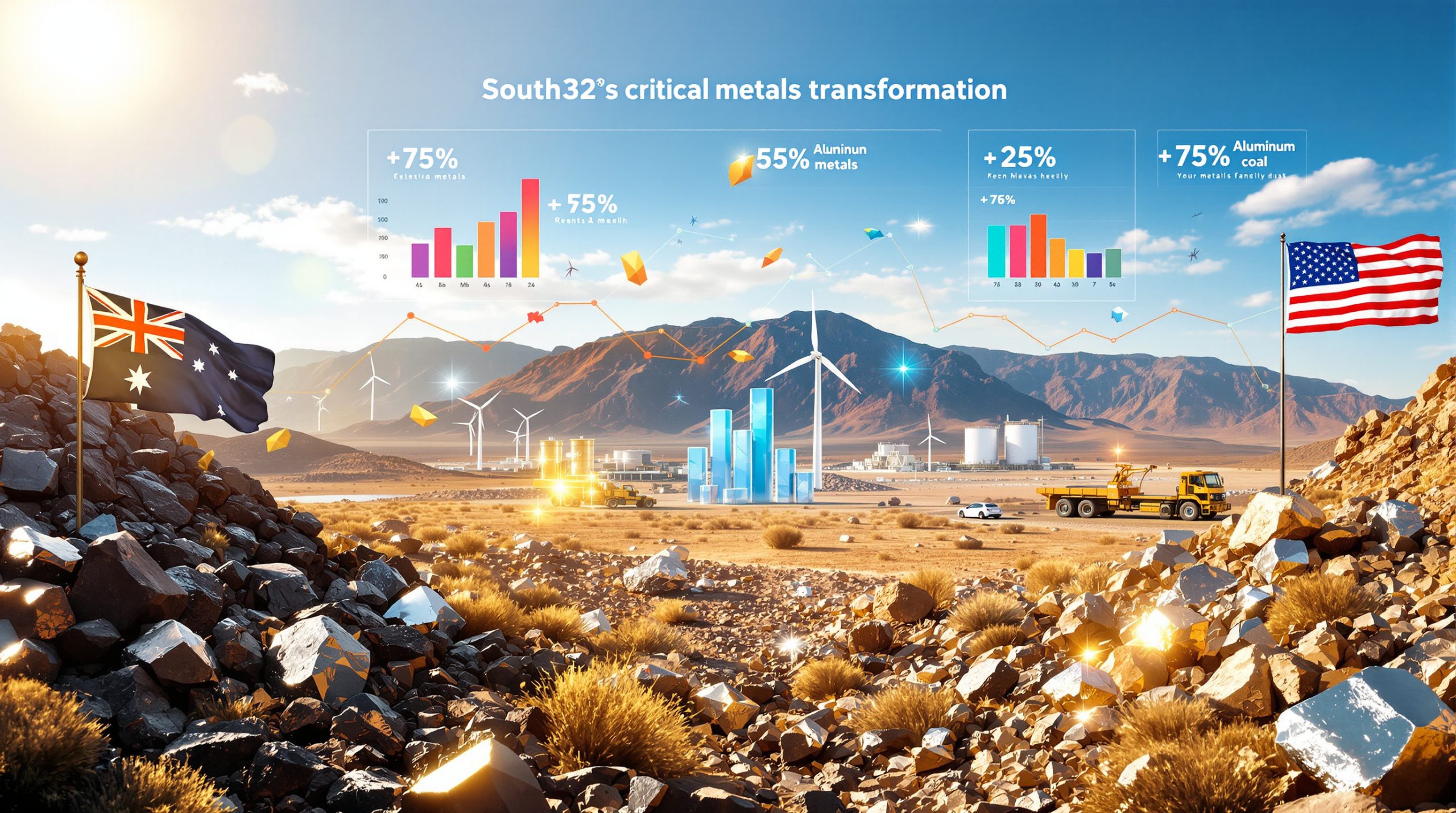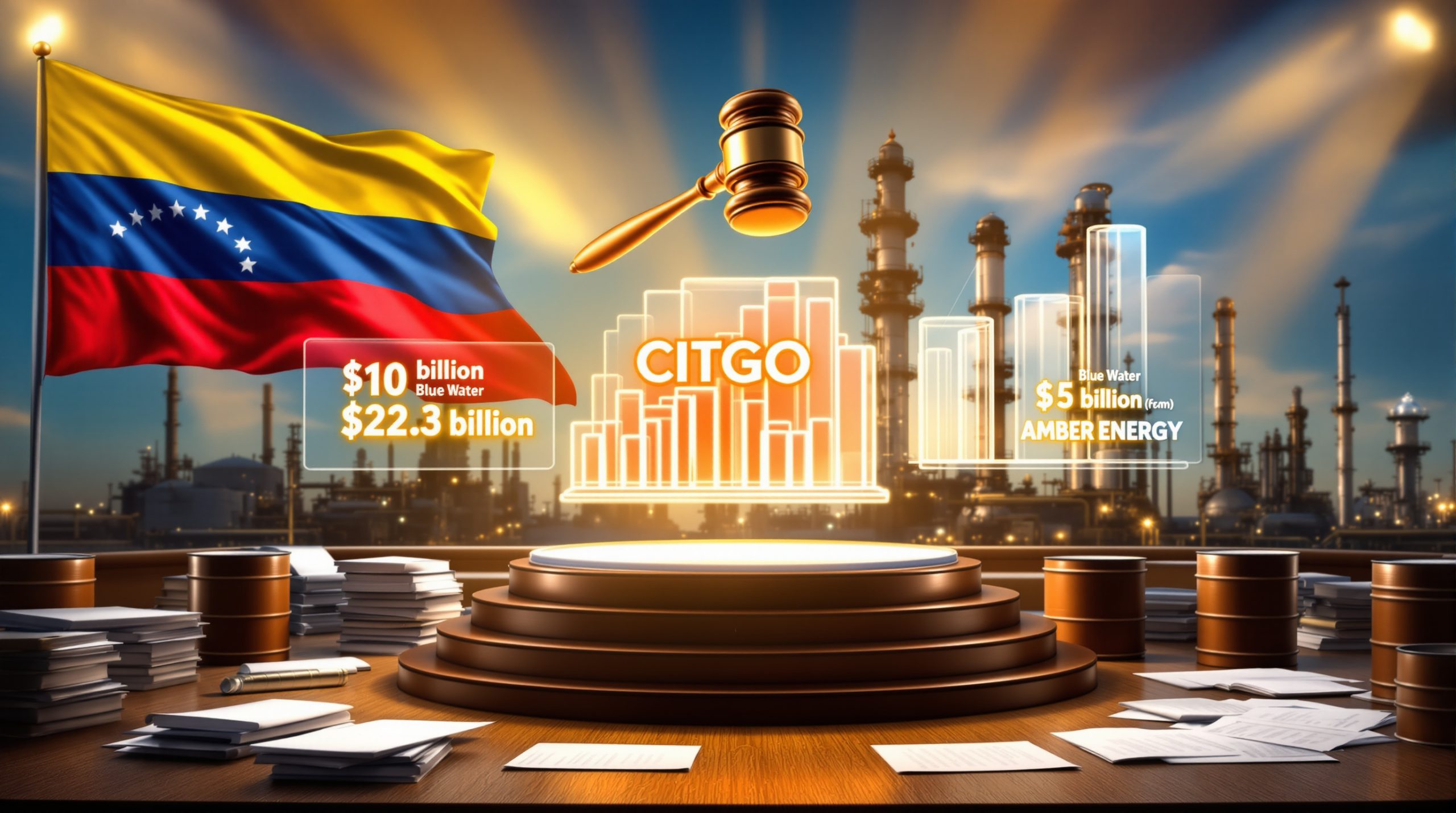Understanding Critical Minerals in the New US Tariff Landscape
The evolving landscape of U.S. trade policy has created a complex scenario where strategic materials essential for national security and economic competitiveness receive special treatment. As the administration implements broad reciprocal tariffs across global imports, critical minerals and reciprocal tariffs stand out as a deliberately protected category, highlighting their outsized importance in modern manufacturing, defense, and technology sectors.
What Are Critical Minerals and Why Are They Exempt from Reciprocal Tariffs?
Definition and Strategic Importance
Critical minerals represent essential raw materials vital for advanced manufacturing, defense applications, and emerging technologies that form the backbone of modern economies. These minerals possess unique properties making them irreplaceable components in everything from smartphones to fighter jets and renewable energy systems.
The United States depends heavily on foreign sources for these materials, with 100% import dependency for 18 critical minerals according to USGS data. This reliance creates significant strategic vulnerabilities in the supply chain, especially considering that approximately 80% of global rare earth production remains under Chinese control as of 2024.
"Exemptions reflect strategic necessity – you can't tariff materials you don't produce but need for every F-35 fighter jet," noted a National Security Council advisor familiar with the policy development process. This pragmatic approach acknowledges the reality that imposing tariffs on materials with no domestic production alternatives would simply harm U.S. manufacturers without achieving trade rebalancing objectives.
The USGS evaluates mineral criticality using a sophisticated methodology that combines economic importance (scored 0-100) and supply risk (scored 0-100), providing a quantitative basis for these policy decisions. Many exempted minerals score above 75 on both scales, indicating their irreplaceable nature and vulnerability to supply disruptions.
Key Policy Details
On April 2, 2025, President Trump signed an executive order implementing a sweeping "reciprocal tariff" policy, citing the "large and persistent" U.S. trade deficits that reached a staggering $1.2 trillion in 2024 as justification for the action. However, within this broadly protectionist framework, Section 3(b) specifically carves out exemptions for "certain critical minerals" from the new tariffs.
These exemptions align substantially with the U.S. Geological Survey's 2022 Critical Minerals List, reflecting a coherent policy decision based on scientific assessment rather than political considerations. The exemption list builds upon existing frameworks established under the Defense Production Act of 1950, which underpins mineral stockpiling policies.
The executive order declared a national emergency related to trade imbalances, providing the legal authority for these sweeping tariff changes. However, the critical minerals exemption reflects a nuanced understanding that certain trade dependencies cannot be resolved through tariffs alone and require longer-term solutions focused on domestic capacity development.
How Do the New Reciprocal Tariffs Work?
Tariff Structure and Implementation Timeline
The reciprocal tariff structure establishes a baseline 10% tariff affecting approximately $3.4 trillion in annual imports across most global trading partners. However, the policy implements significantly higher country-specific rates targeting nations with substantial trade surpluses with the United States.
The country-specific higher rates create a tiered system of trade barriers:
- China: 34% (on top of existing Section 301 tariffs that averaged 25% pre-2025)
- Vietnam: 46%
- Cambodia: 49%
- EU: 20%
- Japan: 24%
- India: 27%
The implementation schedule creates a notable 72-hour window between different tariff levels:
- April 5, 2025: Base 10% tariffs take effect globally
- April 9, 2025: Country-specific higher rates begin
This narrow implementation window created significant logistical challenges, with reports of Vietnam rare earth shipments being held at Long Beach port on April 3-4 as importers scrambled to understand the new regulatory environment. Without the critical minerals exemption, the semiconductor industry would have faced what the Semiconductor Industry Association described as "a 79% effective rate on Chinese gallium – untenable for semiconductor fabs."
Special Provisions for Canada and Mexico
Canada and Mexico operate under separate tariff considerations related to border security issues rather than being included in the reciprocal tariff framework. The executive order explicitly states that new reciprocal tariffs would not stack on top of existing tariffs applied to these nations.
Special rules apply if border security tariffs are removed, potentially bringing these nations into the reciprocal tariff regime. This complex treatment of USMCA partners reflects the intertwined nature of North American supply chains, particularly for critical minerals where Mexico supplies 66.77% of U.S. fluorspar imports (269,700 tonnes in 2024).
The harmonized tariff code distinctions create additional complexity, with minerals classified under Chapter 26 versus Chapter 28 potentially receiving different treatment based on their level of processing. This technical distinction has significant implications for how customs authorities apply the exemptions in practice.
Which Critical Minerals Are Exempt from the New Tariffs?
Complete List of Exempted Minerals
The executive order exempts approximately 50 minerals from the USGS 2022 list, including strategically crucial materials such as:
- Antimony
- Cobalt
- Fluorspar
- Indium
- Gallium
- Bismuth
- Rare earth elements (including neodymium, dysprosium, and terbium)
These exemptions have significant economic implications, with industry analysts noting that "exempting indium saved the touchscreen industry $400M in potential costs," according to Display Supply Chain Consultants analysis. Similarly, Chinese critical mineral export restrictions had already affected gallium exports to the U.S., which had fallen 42% after 2023 export controls, making additional tariff barriers potentially disastrous for downstream industries.
The exemption list underwent rigorous vetting through the Critical Mineral Sustainability Framework scoring thresholds, which evaluates not just economic importance but also environmental impacts and labor practices associated with mineral extraction and processing.
Strategic Reasoning Behind Exemptions
The United States has effectively no domestic production capacity for many critical minerals on the exemption list, creating a situation where tariffs would only harm U.S. industries without encouraging domestic alternatives. For instance, cobalt is approximately 70% used in aerospace alloys and batteries, making it essential for both defense and clean energy applications.
These materials prove essential for national security and defense applications ranging from missile guidance systems to night vision technology. Antimony trioxide, for example, serves as a critical component in flame retardants used in military equipment, highlighting the direct connection between these materials and defense readiness.
The exempted minerals form irreplaceable inputs for emerging technologies and the clean energy transition, particularly in semiconductor fabrication, battery production, and renewable energy technologies. DoD stockpile release procedures for antimony illustrate how these minerals are managed as strategic assets rather than conventional commodities.
Without exemptions, tariffs would significantly harm downstream U.S. industries reliant on these inputs, potentially driving manufacturing offshore rather than encouraging domestic mineral production. The EXIM Bank has established specialized financing rules for exempt mineral purchases to facilitate supply chain security while respecting the exemptions.
How Are Specific Mineral Markets Responding?
Cobalt Market Reaction
Market participants were largely unsurprised by cobalt's exemption given its strategic importance, though cobalt spot prices rose 18% between March 15-April 3 on speculation about potential tariff impacts. More significant concerns remain about Indonesian cobalt's status under the 10% baseline tariff.
China-backed Lygend Mining has emerged as a major producer in Indonesia, with output growing 300% year-over-year through Q1 2025 using advanced nickel-cobalt HPAL technology. This rapid expansion of Asian production capacity contrasts sharply with limited Western alternatives.
Uncertainty persists about whether April 5 blanket tariffs might apply to all nations for certain forms of cobalt, creating opportunities for arbitrage across different product specifications. Battery recyclers have begun stockpiling exempt cobalt sulfate in anticipation of continued policy volatility.
Minor Metals Market Relief
Existing tariffs already impact specialty metals like indium, gallium, and bismuth, which faced a 25% import duty from China before the recent policy changes. Trump's earlier 20% tariff on Chinese imports had already brought the effective rate to 45%, creating significant cost pressures.
Without the critical minerals and reciprocal tariffs exemption, reciprocal tariffs would have raised the effective rate to a prohibitive 79%. According to Fastmarkets analysis, "That would have been the straw that threatened the continuation of production for downstream producers," highlighting the existential threat these tariffs posed to U.S. manufacturing.
The exemption brings much-needed relief to industries utilizing these minor metals, though significant challenges remain for supply chain managers navigating the complex regulatory landscape. Fluorspar acid-grade versus metallurgical-grade pricing differentials demonstrate how technical specifications can dramatically impact tariff exposure.
Antimony Market Perspective
The United States remains heavily reliant on imports despite having significant antimony reserves, creating a strategic vulnerability that the exemption addresses. This critical mineral serves essential functions in lead batteries, ammunition production, and flame retardant antimony trioxide manufacturing.
Traders report widespread reluctance to offer new antimony shipments to the U.S. due to ongoing policy uncertainty, with U.S. antimony inventory levels reportedly at just 23-day supply compared to the strategic target of 45 days. Industry insiders warned that potential tariffs would be "catastrophic for U.S. industries that rely on it."
The volatile antimony market demonstrates how trade policy uncertainty can disrupt supply chains even when formal exemptions exist. Former customs officials note that this uncertainty has "accidentally created a $2B incentive for mineral smuggling networks" as legitimate supply chains struggle with compliance complexity.
Fluorspar Market Impacts
Mexico accounts for 66.77% of U.S. fluorspar imports (269,700 tonnes in 2024), making the USMCA relationship particularly important for this mineral supply chain. The material serves critical functions in chemical manufacturing, refrigerant gases, and aluminum production.
Market participants welcomed the exemption, with one noting that "not too much has changed overnight" for fluorspar trade flows. However, Mexican trucking capacity constraints at the Eagle Pass crossing have created logistical bottlenecks independent of tariff policy.
Chemical companies like Orbia (owner of the world's largest fluorspar mine in Mexico) are actively scenario planning for future policy shifts. "Every chemical plant manager is running tariff impact models nightly," according to Orbia's VP of Strategic Planning, highlighting the ongoing operational challenges despite current exemptions.
What Challenges Remain for Critical Mineral Supply Chains?
Market Uncertainty and Trade Confusion
The rapid implementation of the new tariff regime has created widespread reluctance to offer new mineral shipments to the U.S. amid policy volatility, with 68% of traders reporting "extreme difficulty" obtaining cargo insurance for affected shipments. Customs clearance times have reportedly increased 300% at major ports as officials struggle to implement the complex new rules.
Significant confusion persists about how old and new tariff regimes function together, particularly regarding the interaction between Section 301 tariffs on China and the new reciprocal tariff structure. Incoterms 2025 revisions for tariff-allocation clauses attempt to address these complexities but add another layer of contractual challenges.
Legal ambiguity regarding the application of blanket tariffs to specific nations creates compliance risks for importers, with customs bonding requirements for pre-April 5 shipments adding financial pressure. Some companies are exploring blockchain pilots for cobalt provenance tracking to ensure compliance with country-of-origin requirements.
Concerns about future policy shifts affecting currently exempt minerals remain prevalent, with 94% of surveyed manufacturers expressing desire for permanent exemptions rather than potentially temporary carve-outs. However, a Commerce Department official candidly acknowledged that "this exemption list will be revised quarterly – nothing's permanent."
Supply Chain Vulnerabilities
The United States remains structurally dependent on imports for most critical minerals, with limited short-term alternatives regardless of tariff policies. China continues to dominate global commodities markets, maintaining control of approximately 80% of global rare earth production despite diversification efforts.
Limited domestic production capacity for most exempted materials means that $1.7B in new domestic mining projects announced since April 2 will take years to reduce import dependency. The Defense Production Act Title III provides funding criteria for accelerating domestic capacity, but geological constraints limit how quickly production can ramp up.
Downstream industries report struggling to pass costs through the value chain, with downstream cost pass-through success rates varying dramatically: 37% for aluminum versus just 12% for gallium-containing components. This cost absorption threatens margins and long-term viability for smaller manufacturers.
Canadian rare earth miner bankruptcy filings highlight how policy uncertainty affects investment throughout the supply chain, not just immediate trade flows. The Department of Energy's critical minerals loan guarantee program has seen a surge in applications, but funding remains limited relative to the scale of the challenge.
FAQ: Critical Minerals and US Tariff Policy
What defines a "critical mineral" under US policy?
Critical minerals are defined by the USGS based on a rigorous methodology that quantifies supply risk, importance to economic and national security, and lack of viable substitutes. The current list was established in 2022 and includes approximately 50 minerals essential for manufacturing, defense, and emerging technologies. The Critical Minerals Sustainability Certification system provides draft standards for evaluating not just strategic importance but also environmental and labor practices.
Will the critical minerals exemption remain permanent?
The exemption is subject to ongoing policy review and executive decisions. Commerce Department officials have indicated that the exemption list will be revised quarterly, suggesting these are not permanent carve-outs. Market participants express significant concern about future volatility, with 94% of surveyed manufacturers advocating for permanent exemptions to enable long-term planning.
How do these exemptions affect US domestic production of critical minerals?
While the exemptions maintain access to essential materials and protect downstream industries, they may reduce economic incentives for developing domestic production capacity. Nevertheless, announcements of $1.7B in new domestic mining projects since April 2 suggest investors see long-term opportunities regardless of current exemptions. The Defense Production Act provides mechanisms to support domestic capacity development through guaranteed purchases and financing support.
How are international suppliers responding to the new tariff landscape?
Many suppliers exhibit hesitancy to offer new shipments to the U.S. due to persistent policy uncertainty, with 68% of traders reporting difficulties securing cargo insurance. Some suppliers are accelerating deliveries in case future policy changes remove current exemptions. Meanwhile, Australia's Prime Minister has responded with interest-free loans for critical minerals projects, as countries seek to position themselves advantageously in the evolving trade landscape, particularly for strategic resources like uranium and other energy minerals.
Searching for the Next Major Mineral Discovery?
Discovery Alert's proprietary Discovery IQ model instantly notifies investors about significant ASX mineral discoveries, turning complex critical mineral data into actionable investment insights. Understand why historic discoveries can generate substantial returns by visiting Discovery Alert's dedicated discoveries page and begin your 30-day free trial today to position yourself ahead of the market.




